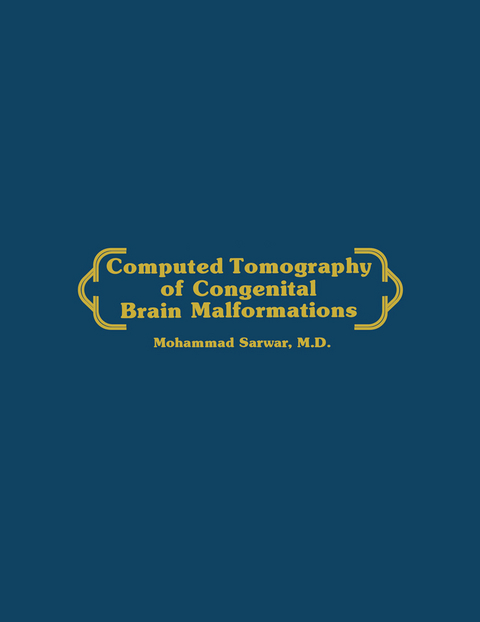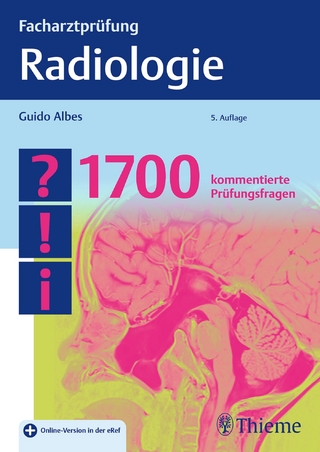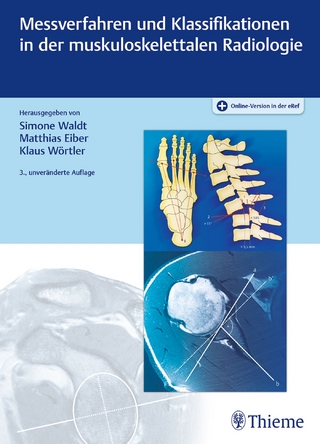Computed tomography (CT) interpretation of congenital malformations of the brain can be quite a difficult and an intimidating task. This book has been written to help allay that intimidation and make CT interpretation of these disorders easier. The embryologic and pathogenetic aspects of these malformations are not clearly defined in every instance; I have tried to present in this work these aspects as I understand them. I hope I have accomplished my objective. Acknowledgments I gratefully acknowledge the superb editorial assistance of Joan Wallace, manuscript typing by Eve VanDine and Susan Morrissey, and the preparation of the illustrations by Tom McCarthy and Ann Curley. Last, but not least, I appreciate the understanding shown by my family during the long preparation of this work. Contents page Dedication ...................................................................... v Preface ......................................................................, vi Acknowledgments ................................................................ vii Chapter 1. Introduction. . . . . . ........................................................ . " 3 2. Embryology of the Central Nervous System .......................................... " 7 3. Dysgenesis of the Corpus Callosum. . . . . . . . . . . . . . . . . . . . . . . . . . . . . . . . . . . .. . . 21 . . . . . . . . . . . 4. Holoprosencephaly (prosencephaly), Septo-Optic Dysplasia (deMorsier Syndrome) and Hydrencephaly (Hydranencephaly). . . . . . . . . . . . . . . . . . . . . . . . . . . . . . . . . .. . 50 . . . . . . . . . . . 5. Arnold-Chiari Malformation .................................................... " 77 6. Dandy-Walker Malformation ........................................... . . . . . . .. . . 96 7. Hydrocephalus ............................................................... 115 8. Neurocutaneous Syndromes (phakomatoses) ........................................... 127 9. Miscellaneous: 1) Encephalocele, and Meningoencephalocele and Meningocele .............................. 144 2) Porencephaly ............................................................. 144 3) Microcephaly (Micrencephaly) .................................................. 148 4) Anencephaly ............................................................. 153 5) Median Cleft Face Syndrome ................................................... 153 6) Hypertelorism ............................................................. 157 7) Hypotelorism ............................................................. 157 8) Lissencephaly (Agyria, Pachgyria) ................................................ 157 9) Colpocephaly ............................................................. 157 10) Fetal Alcohol Syndrome ...................................................... 159 11) Arachnoid Cysts . . . . . . . . . . . . . . . . . . . . . . . . . . . . . . . . .............. . . . . . . . . . . 159 . . .
1. Introduction.- 2. Embryology of the Central Nervous System.- 3. Dysgenesis of the Corpus Callosum.- 4. Holoprosencephaly (Prosencephaly), Septo-Optic Dysplasia (deMorsier Syndrome) and Hydrencephaly (Hydranencephaly).- 5. Arnold-Chiari Malformation.- 6. Dandy-Walker Malformation.- 7. Hydrocephalus.- 8. Neurocutaneous Syndromes (Phakomatoses).- 9. Miscellaneous:.- 1) Encephalocele, and Meningoencephalocele and Meningocele.- 2) Porencephaly.- 3) Microcephaly (Micrencephaly).- 4) Anencephaly.- 5) Median Cleft Face Syndrome.- 6) Hypertelorism.- 7) Hypotelorism.- 8) Lissencephaly (Agyria, Pachgyria).- 9) Colpocephaly.- 10) Fetal Alcohol Syndrome.- 11) Arachnoid Cysts.- 12) Megalencephaly.- 13) Craniofacial Anomalies in the Amniotic Band Disruption Complex.- 14) Anomalies of the Septum Pellucidum and Cavum Velum Interpositum.



